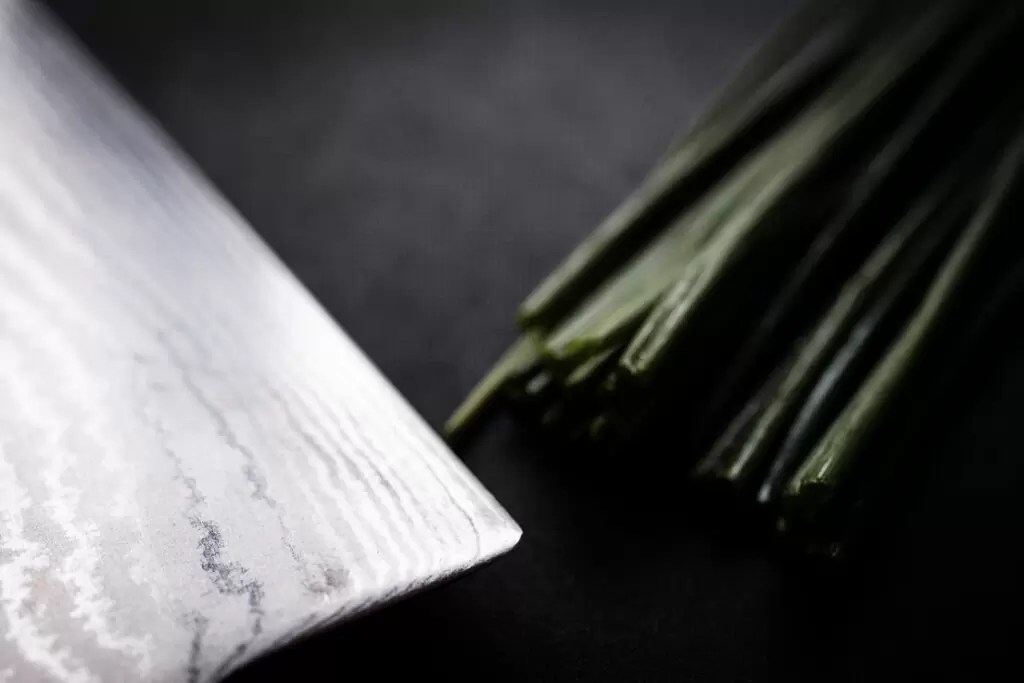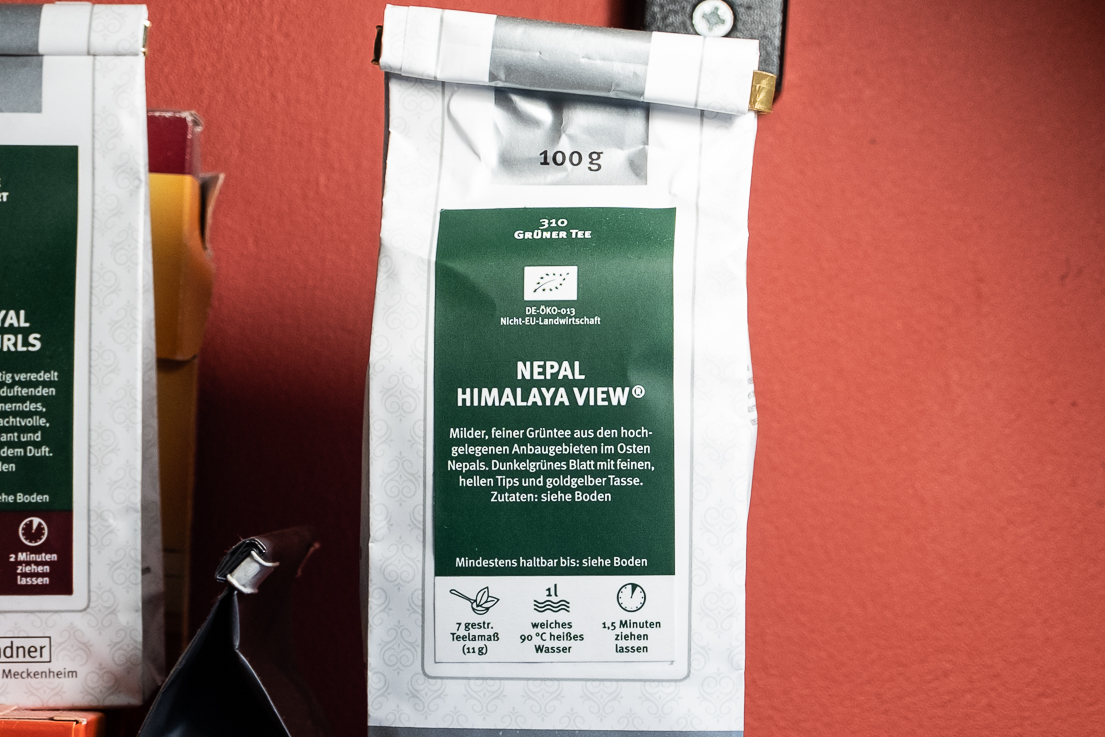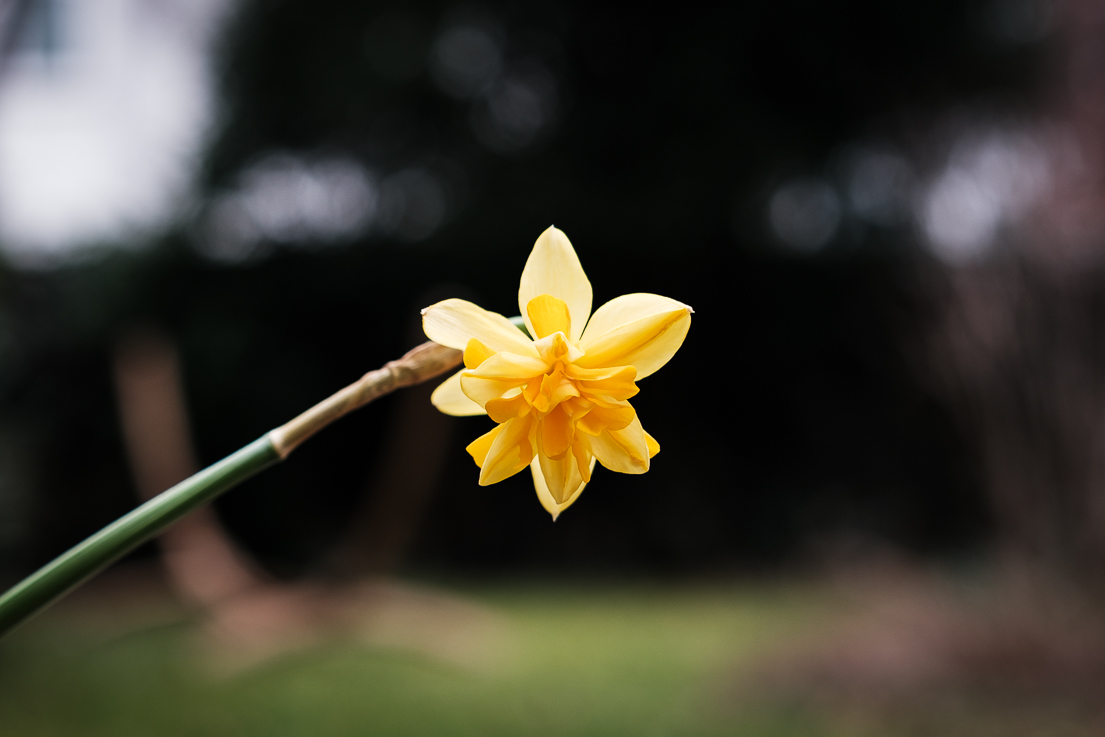The Fujinon XF30mm F2.8 R LM WR Macro | A Closer Look
Prologue
Ta-da! This is my very first review of a macro lens. Namely, a review of the brand new XF30 Macro – or by its full name: Fujinon XF30mm F2.8 R LM WR Macro.
What’s going on now? Have I suddenly discovered macro photography? No, of course not… and the following lines will not be about macro photography either. So, what’s the point of all this, you might ask? It’s simple: the XF30mm Macro is such an interesting and versatile lens that I just couldn’t resist. And yet I won’t be photographing insects in the future…
… because others can do it better and that’s a good thing.
A macro lens? Seriously?
Yes, seriously! I had briefly thought about the XF80mm Macro from time to time before, but never seriously considered it. I am not a macro photographer, and for the few exceptions when I did need it, I made do with the macro extension tubes.
So, where did the change of mind come from? Quite simple, I got my hands on the XF30 Macro at a product presentation and quickly understood how smart this lens is. More about that in a moment… especially in this section.

The XF30 F2.8 R LM WR Macro
The new XF30mm F2.8 Macro is a very interesting lens, at least for me. When I saw it live for the first time, I had to grin a little. Look, a Macro Fujicron, I immediately thought. And that’s what it really is at first sight. It fits quite smoothly into the series of “Fujicrons”, which are (supposed to be) somewhat reminiscent of (vintage) Leica Summicrons due to their appearance and size. Although there are now two slightly slower lenses in this series, this one and the XF16mm F2.8, the relationship remains.
But is it any good?
Optical performance
As I just mentioned, not only have I never written a review of a macro lens, but I have also never owned one. So, I can’t compare the optical performance to other macro lenses at close range. But that won’t be necessary, I can certainly evaluate it for myself as well.
Sharpness
Even though the XF30 Macro is very compact, one should not underestimate its optical properties. 11 lens elements, including 3 aspherical and 2 made of ED glass, in 9 groups indicate a thoroughly complex optical formula.
From my point of view, the XF30 Macro delivers this to the sensor. This also applies to the new 40 megapixel sensor of the X-H2 or the X-T5. Even at f2.8 it is very sharp in the centre of the image and is roughly on the same high-resolution level as the new XF33mm F1.4. And you must bear in mind that the latter has already been stopped down by 2 f-stops here.
Towards the edges the sharpness drops a little, but it remains at a more than usable level. No comparison to the clearly visible loss of sharpness at the edges of the XF35mm F2. All in all, I find the XF30 macro a remarkably sharp lens that can be used at open aperture without any restrictions.
Is it as sharp as the XF80mm Macro? To be honest, I can’t say, as I neither own nor have ever held it in my hand. However, physics certainly cannot be ignored here either. The XF80mm Macro is probably on another level in terms of resolution due to its size and extremely complex optical construction. So, I would be very surprised if the XF80 Macro was not optically superior.
Optical aberrations
Again, I keep it very short: chromatic aberrations are excellently corrected. Period.
Purple fringing
Nothing worth mentioning here either.

Bokeh
Despite the rounded 9-blade aperture, the bokeh is a tiny bit nervous in my opinion. This statement should not be overrated, it is not bad in any case. Those who place the greatest value on a very soft, blurred background, though, will perhaps not be 100% satisfied. However, the transition between the area of sharpness and the area of blur is very soft in my view.
It is simply not a “bokeh king” like the XF56 1.2, for example, nor like the also quite new XF33 1.4. Not only does it lack the necessary speed, but also the corresponding rendering. At the same aperture, you can see the difference. Whether this is an argument against the lens is something everyone must decide for themselves. From my point of view, of course, it is not!
If you look very closely at the example above, you can see what I mean. But the difference is neither particularly dramatic nor decisive for such a lens. And of course, you don’t get the f1.4 bokeh, but that’s quite clear.

In summary: The bokeh is at least OK or even quite nice, but perhaps not the XF30 Macro’s greatest strength.
The macro thing
I’m venturing into unfamiliar territory here, so I don’t want to write too much about it. After all, I have no knowledge of serious macro photography. So maybe I’ll just write one or two things that caught my eye.









If you really want to get serious, deep and/or professional into macro photography, you will probably choose a different lens. I believe this is mainly due to the following two reasons:
Firstly, you will probably want maximum optical performance in terms of resolution. At least that’s what I have in mind when I think of photos of dragonfly eyes or butterfly wings. And as good and sharp as the XF30 Macro is, it is certainly not one of the top candidates in this respect.
Close – closer – too close?

Secondly – and certainly much more decisive – is the rather short focal length. With the focal length of 30 millimetres, you have to get close to reach the maximum magnification of 1:1. Very close. Damn close! To be precise, you are then only about 1 cm away from the front lens.

And this has two easily comprehensible disadvantages. In nature, for example when photographing living insects, this will be rather difficult – if not impossible. That should certainly be considered here.
Even more serious, however, is the lighting problem. When you have to get so close to your subject, the shadow of your own lens quickly falls on the subject. The illumination of the objects thus becomes at least a problem, but in any case, a certain challenge.

For me, that’s perfectly OK. For what I need, I can easily find ways to work around the problem. Apart from that, I’m not going to become a macro photographer and simply enjoy the possibility of being one here and there. But I doubt that serious macro photographers will always see it that way.
On the other hand, of course, there is no disadvantage without an advantage. 🙂
If you can solve the lighting problem well, this is the perfect macro lens for working in the smallest of spaces. So, if you don’t have much space for a huge macro table setup, then the XF30 Macro plays out its advantages. My absolutely non-professional little food blog could certainly benefit a lot from this.
Autofocus performance
Experience shows that macro lenses do not have the fastest autofocus. This is simply because they have a very long way to go from infinity to minimum, due to a very short minimum focus distance. The longer the focal length of the macro lens, the more this behaviour increases.
To compensate for this “disadvantage”, manufacturers often chose the approach of adding a focus limitation, especially to the longer focal length macro lenses. This could sometimes even be set to different ranges, e.g. only close-up range or not “normal range”.
The XF30 Macro does not really need this function and consequently is not equipped with it. This has two reasons: the relatively short focal length of 30mm and the use of a linear motor for AF. In clear terms, this means that the AF of the XF30 Macro in real-life use is usually about the same as that of the other LM lenses in the X series. Which means it is very fast.
Only when changing the subject between extremely close and very far away is it possible that the AF of the lens initially “runs in the wrong direction” and thus causes a significant delay.
However, this hardly matters in practice (for me).
All in all, the AF is excellent, especially for a macro lens. By the way: In macro photography, manual focus is mostly chosen anyway because it is easier to place the focus point exactly where you want it.
Mechanical quality
The XF30 Macro has the same excellent build quality as the other second generation lenses I’ve recently reviewed. I can’t think of a single point of criticism here. This also includes the superb aperture ring. As I have already written elsewhere, I find the aperture ring of the “Fujicrons” to be one of the best of all X-lenses.
I’ll even spare you my obligatory complaining about the plastic lens hood that comes with the lens. It’s not the greatest, but it’s reasonably small and fortunately not tulip-shaped like with the XF35 F2.

Size and weight
What can I say? For me, with my demands for compactness, the size and weight of the XF30 Macro is a dream. In fact, it’s one main reason I bought it in the first place.
Externally, it probably looks most like the XF50mm F2 because of its length, which I don’t own. Next to the XF35mm F2 (German only) it looks like a brother being a bit tall…


A macro lens that fits into even the fullest photo bag or even my jacket pocket and weighs only 195 grams simply has a very special charm and value for me.
Usability
The XF30 Macro is a remarkable and not entirely easy lens to judge. On the one hand, it is rather unspectacular in the “individual disciplines” – never bad, but not extraordinarily special either. It has an ordinary (standard) focal length, is not particularly fast and is not exceptionally outstanding optically. And that’s how it looks: unspectacular.
However, it is precisely this mixture that makes the XF30 Macro so special. All the unspectacular leads to a highly versatile lens. As a practically standard focal length, it can be used in many situations. With its speed of 1:2.8, it is still as fast as large, fast standard zoom lenses.
On the other hand, it is comparatively tiny and super light. In addition to all this, you also get a real macro lens with a magnification of 1:1. If you know what restrictions (light setting) you are buying into, then you can deal with that.
That’s really more than enough! In my opinion, this lens is a real insider tip, especially for nature and landscape photographers. You can either go out on a tough hike with only this lens and little luggage. Or you can keep it in your bag in case you suddenly need a macro lens.
I am neither a nature nor a landscape photographer, but I bought it anyway. It was just too tempting not to say no to this little jack of all trades.
Pros and cons
As usual, also graded from (++) to (- -)
What I like
- Decent size and weight (++)
- Maximum magnification of 1:1 (++, but difficult to use)
- Excellent build quality (++)
- Very good sharpness/resolution (+)
- Smooth, but not exceptional bokeh (+)
- Almost round aperture with 9 diaphragm blades (+)
- Very good (fast, silent and reliable) autofocus (+)
- Great aperture ring (+)
What I don’t like
- Light setting difficult at maximum magnification (-)
- The included plastic lens hood (whereby this one is quite OK)
- Actually, nothing serious
Verdict
The overall verdict for my personal benefit is very simple. For me, the XF30 Macro represents a highly interesting and great lens that simply fills a gap in my line-up. It gives me a tiny and lightweight macro lens that is also very versatile in other ways. So, I don’t regret this rather unplanned purchase in any way.
But everyone must assess this very carefully for themselves. Genuine macro photographers will certainly see things a little differently. And the rest of us, of course, have to be prepared to pay a lot of money (699,- €) for the pleasure of being able to enter the macro range at least a little.
I was willing to do that, and I can justify it for myself. Because the lens is simply fun, and I really do find enough uses for it.
Highly recommended! (Except possibly for those really ambitious macro photographers)
There is always light somewhere – go out and shoot!






Hi Mr. Peter Poete.
Thank for you for this practical review. I’m contemplating on getting an XF30mm/2.8 Macro but need to sell/trade-in two of my lenses that I own. Here are the possible combinations:
1. 35/2.0 + 50/2.0
2. 27/2.8ii + 35/2.0
3. 27/2.8ii + 50/2.0
The no. 1 option is what I’m opting for as nowadays, these two lenses are not used often especially the 50/2.0 which can be described as a sitting duck inside my dehumidifier box.
My used utilized lense on my X-T3 is the 27/2.8ii and I really adore its compact form factor. I know its image quality is just decent (compared to say the 33/1.4) but that won’t bother me because I often use diffusion filters for my shots. But, of course, I have to ask myself if it’s worth sacrificing a stop of light because should I push thru with option#1, I’ll end up with two f/2.8 lenses.
Usually I shoot documentary portraits, cityscapes, landscapes and food/drinks. For near macro photography, I also have the 16/1.4 and X100v which are both capable of semi-macro close-up shots but not as close as 1:1.
So given my circumstance, what would you advice? Some have mentioned to just retain the lenses and be content with the X100v’s Macro capabilities. Others suggest to rid of the 27/2.8ii (the lense that I love) and the 35/2.0 since the 30/2.8M covers these ranges in between.
Hoping to get your thoughts. Thank you.
Hi Nathaniel,
Thank you for your comment and also for having the trust to ask me for advice. Unfortunately, I’m afraid I can’t really help you from a distance. Even if you have already described your “dilemma”, I know far too little about you and your photography to be able to give you any serious advice.
But OK, here are a few personal thoughts. If you are really interested in macro, neither the XF16 nor the X100V are a substitute for a macro lens. That’s a different world. You just have to ask yourself how important a seriously large magnification is to you and how often you need it.
The only thing that strikes me about the lenses is that the XF27 seems to be really important to you. I will never sell my XF18 F2 either, and I still own the XF18 F1.4. Selling your favourite and most important lens doesn’t seem right to me somehow. Since you own the XF16 1.4, you have a very fast lens. Whether a high speed at 35mm and 50mm is also important to you is something you have to decide. If in doubt, you might have to sell just one of them and wait a little longer before buying the XF30.
Sorry, I don’t think I can help you any more than that.
Cheers,
Peter
Hi Peter,
Thanks for your advice. Sometimes I think that even though the 27/2.8ii’s my most cherished lens presently, with the use-cases of the 30/2.8ii, over time, the 27 may also become rarely used. Simply because that the 27 isn’t really that versatile except useful if you want to carry minimal photo gears.
My main purpose for the 30/2.8M is a walk-around lense where I can use it’s close-focusing feature if needed (especially food). I don’t think I’ll be needing 1:1 magnification but it’s good to know that the 30’s capable with it.
It may just all boil down if I’ll be contented with the X100v’s 1:4 magnification feature as opposed to the 30’s 1:1. I can also consider trying out the Macro filter diopters I have here if it could provide good enough macro shots installed on the the 27/2.8ii, 35/2.0 and 50/2.0.
Thank you so much for replying to my inquiry, Peter.
Hello Nathaniel,
that sounds like a plan. I think the XF30 Macro is great for nature photographers in particular. Because with it you can take general nature shots and also cover the macro range relatively well if you need to. Real macro photographers will look for another solution, because – as I described – 1:1 is not so easy to implement in practice with it.
I’m just lucky enough to be able to afford it alongside. It really doesn’t replace a lens for me. I use it mainly for close-ups for fun.
Cheers,
Peter
Yes Peter. That’s exactly what I want to do with the 30/2.8M should I purchase it—For FUN getting very close-up images. I’ll not be seriously shooting those 1:1 often and avoid the trouble of setting-up those tripods to get that so-called stacked close-up images shot.
This is the main reason I’m inquiring around Fujifilm Forums and since I stepped on your website, and owning one, I was curious if you’re going to recommend it to me. Maybe if I decide to rid of the 27/2.8ii and the 35/2.0, and RETAIN the 50/2.0, you’d say that I should go for it. But since it’s likely that I would want the 27/2.8ii alongside the 30/2.8, the 27, over time, may become redundant.